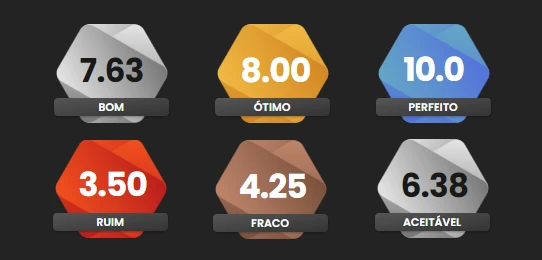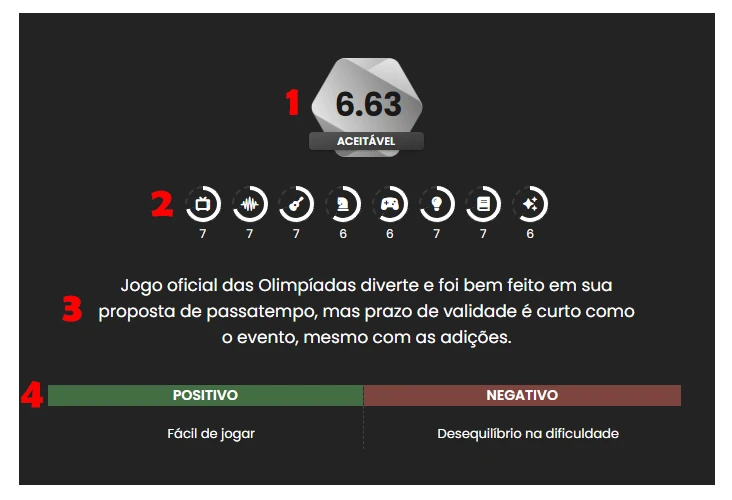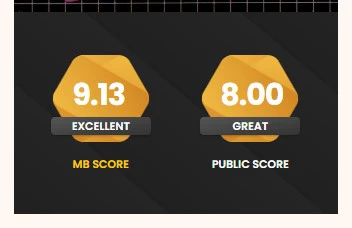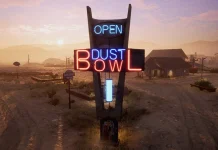Game reviews are the main reason Memória BIT exists.
Readers will come here looking for an opinion before deciding to buy a game, no matter if it's a fresh new release or an old timer they found on sale. In other words: if you're going to write reviews, think of it as a responsibility. You're helping to decide whether it's worth your reader's hard-earned money and precious time.
As much as it may sound as fun and games (pun intended) to write about games, take it seriously.

Now if you are a reader...
Honest reviews
...note that our intention is not to protect or attack games or companies in particular – even if we do it, it's nothing personal. Ratings and review content will never be paid or promo material. These are independent opinions of the reviewers, which you should combine with others to form your own.
We offer reviewers freedom, but we don't allow trolling or bs! Each new review is evaluated; if a rating is completely out of touch with reality, the reviewer will have to justify it, if they have not already done so in their text.
Our reviewers
MB is always open to new reviewers. However, to maintain a quality level, we have criteria for selecting who can write and publish not only reviews but also register games, articles and biographies.
Each reviewer gives grades according to their own judgment, without guidance from the site. They are also instructed to give grades with:
- Honesty: the site doesn't accept coercion, suggestions or benefits in exchange for review scores. The reviews follow the most honest technical criteria of each reviewer – who are also instructed to make criticisms without worrying about possible negative reception from the public or developers. The analysis is the reviewer's opinion, crude, to the point, end of story.
- Neutrality: the publication of reviews with paid content, purchased ratings or any form of personal interest is prohibited. If this happens and is identified, the reviewer will be immediately removed and any compromised material will be taken out from the site.
- Aplication: reviewers are instructed to play the game as most as possible before reviewing it! It doesn't matter if it's a new release or an old game: it's by playing that you gain the knowledge to draw conclusions. If this isn't possible – such as in test versions, chapters or pre-releases – reviewers should inform the reader about the conditions of the production of their review.
If you disagree with the ratings, feel free to use the comments area and express your opinion, chat with the authors and other users. Polite discussions are welcome! The reviews do not represent the opinion of the site, but of the reviewer who published it. The authorship is indicated on the review page.
To find out who has already written on Memória BIT, check out the "Team" page. Active and former authors are listed there.
Games from all generations
One thing that sets MB apart is that we don't restrict reviews to new releases. Reviewers are encouraged to review games from any era, including older ones like those for the Super Nintendo, classic PlayStation, Atari 2600, etc. There are no limits: if it's a video game, it can appear here at any time.
And what is this for? With the continued public interest in classic games and systems – as seen in the success of mini consoles and emulators – there are always new people arriving. This also applies to products on sale on virtual consoles and stores like Steam and Epic Store.
There are also those – and it's a lot of people – who are nostalgic, who enjoy reviews of games that were important at some point in their lives.
There is a large audience that consumes games, and not just new ones. If it’s not for you, okay! But remember that many people may be having their first contact with those classics you play since childhood.
Our rating system

1. Average rating
We use our own system of grades and scores at MB. There are eight grades, with scores from 1 to 10 given by the reviewer. The average of these, reduced to two decimal places, forms the average score, displayed as a badge with the number.
The scores are given by the reviewer who signs the article.
2. Grades
Graphics: the reviewer will evaluate the general visual quality of the game, from pixel art designs in 2D to maps and models of modern 3D games.
Sound effects: evaluation of effects only, both the technical quality and the way in which they were applied.
Music score: covers both the quality and its functioning within the game. It is worth remembering that some games do not have music; in this case, reviewers are instructed to rate the lack of soundtrack according to its impact on production.
Gameplay: evaluation of the game mechanics, if they were well constructed, and meet the expected purpose. Factors such as excessive repetition/grindness and poor optimization can influence the score. Interface design can also influence gameplay (such as badly drawn menus hindering the action or HUDs lacking features).
Controls: specific evaluation on the quality of controls. Is it responsive, agile, intuitive? Confusing, slow? Simplistic when it needed features or complicated when it needed to get straight to the point?
Creativity: not every game needs to be creative to be good, but we cannot ignore the advantage of a game that presents something fresh, a renewed and enriching idea. Or even one that uses already known proposals in surprising ways.
Plot/story: just like music, not every game needs a plot. Reviewers are encouraged to evaluate not only the story being told, but whether the game has managed to develop its proposed theme in a convincing way. Example: an excellent Formula 1 game probably won't have a story, but if it gives the player a realistic experience of dealing with a car of the category, we can consider it a good "plot".
Charisma: the most unusual criterion of our system. By charisma, we mean game's ability to present attractive characters, stories and situations that are not only fun but also memorable and engaging. These are games capable of creating a more lasting and deeper connection with the audience.
3. Summary of the review
A brief description given by the author of the analysis, for those who don't have time or are too lazy to read the whole thing. If you're going to write, be succinct in that paragraph: it's the famous TL;DR (too long, didn't read).
4. Pros and cons
The reviewer may highlight more or less interesting points of the game. These highlights represent features that deserve special attention, even if they are mentioned in the article.
The average score
The reviewer doesn't randomly gets the average from his head: it is calculated automatically from the individual ratings.
It's perfectly possible for a game to have a 10 average from a reviewer, but in the public ratings, in the Games section, it's almost impossible – if one only reviewer does not give a top score, the average will fall forever slightly below 10.
This is also why a game can be evaluated textually as not so interesting by the reviewer, but the final average says "Good", for example. A spectacular concept (graphics, or maybe plot) in a bad game could boost its average rating.
10. Perfect
Very few games will receive an average score 10. Only those that managed to combine spectacular gameplay, exuberant graphics, revolutionary ideas executed with mastery and a rare ability to please the public.
Exemple: the original Gran Turismo, a masterpiece of racing games.
9. Excellent
An excellent game got very close to perfection. Just like the perfect ones, they managed to explore all the design proposals of their style, ensuring a lot of fun. Probably they slipped up on some minor points.
Exemples: Samurai Shodown (Neo Geo), Street Fighter II: The World Warrior (SNES).
8. Great
You'll remember a great game after playing it just once, because well, they are great. While they're not perfect, they've gone a long way, delivering an above-average mix of qualities that make them an excellent choice for their respective systems.
Exemples: Alien vs Predator (arcade), Mr. Bones (Sega Saturn).
7. Good
These games deserve your attention and time. Some may not be exactly the most creative or well-executed of the genre, but as a whole, they are consistent in the results they deliver, making them a good recommendation.
Exemples: Beyond Oasis (Mega Drive), Cadillacs and Dinosaurs (arcade).
6. Acceptable
An acceptable game is one that achieves some goals and will probably please part of the audience. On the other hand, it doesn't really excite the masses. It escapes mediocrity and is only essential for those who really like the genre, franchise, etc.
Exemples: Shenmue 3 (PC), Road Rash 64 (Nintendo 64).
5. Average
Average, mediocre, half-455, sloppy. That's exactly what these games are. They don't add much to their genres, but they don't wallow in the mud either. Some may have great qualities alongside others that are below average. Way below.
Exemples: Duck Hunt (NES), Altered Beast (Mega Drive).
4. Weak
Games don't always turn out the way public and developers would like, stumbling on a variety of features. Maybe, very maybe, they have something that deserves praise for the effort, but overall, they're not worth your time.
Exemples: ClayFighter (SNES), Jingi Storm (arcade).
3. Bad
If weak games rely on features that could save them, others do even worse, stumbling on even the most basic aspects of the genre. The recommendation is to stay away (except out of curiosity or perhaps nostalgia).
Exemples: Superior Soldiers (arcade), Fighting Masters (Mega Drive).
2. Horrible
It's hard to explain why the publisher wasted time and money putting these games out. They are the result of such a serious sequence of mistakes, that it would have been better if they had never happened, sparing the world an unpleasant experience.
Exemplos: -
1. Trash
Don't buy it. If you bought it, return it quickly. If you borrowed it, don't play it. Seriously. No one knows why these games exist, maybe not even the producers. We are not responsible for traumatic experiences, fits of laughter and crying, and other desperate reactions.
Exemples: -
Public reviews
When browsing the "Games" section, you will see two ratings just below the cover art.

The first is the average of the review published by a MB reviewer. The other is the average of the public ratings: those that you, the reader, give using the star rating system to vote.
The stars, as you probably already know, is under the game's title, so don't be shy and use it like no tomorrow.

Whenever you come across a game in the Games section, leave your rating. This will help to form the ranking of the most popular games.







